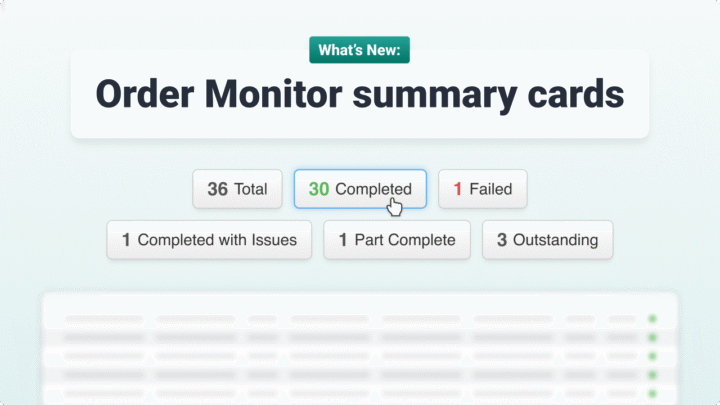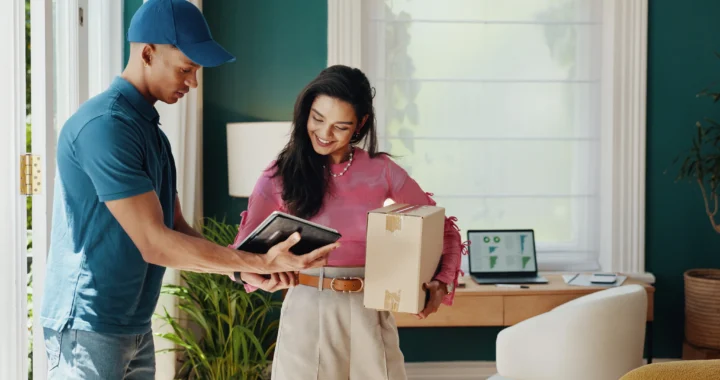Making your customers happier through Delivery Software
The delivery and returns process have some of the lowest satisfaction scores, when it comes to online shopping, with around 40% of people wishing to improve shipping costs, ease and online tracking ability.
As mentioned in this post, delivery expectations are only becoming more and more important to businesses:
“delivery impacts every stage of the consumer buying process and is a top consideration when shoppers determine where to make their purchases
The pressure is on to get last mile capabilities right or suffer the consequences
When delivery expectations aren’t met, today’s online shoppers are unforgiving and won’t hesitate to shop elsewhere“
This article shows you some of the ways you can differentiate your business by improving customer service at the point of delivery.
Meeting and exceeding expectations around service and delivery is an easy way to gain a competitive advantage.
And the simplest way the meet those customer demands? Streamlining your delivery logistics process.
What is delivery logistics?
Logistics usually refers to the planning, organisation and management of operations, particularly the operation of moving goods and services.
LogsticsWorld, a leading authority on transport and logistics, as recommended by CILT (the Chartered Institute of Logistics and Transport), defines logistics as:
“The science of planning, organizing and managing activities that provide goods or services”
While this definition could also include the delivery of services and the coordination of the entire supply chain, this article specifically discusses delivery logistics – the planning, organisation and management of delivering goods to businesses or consumers.
What is a delivery logistics platform?
A Transport Management System is the system used to manage the logistics process for businesses making their own deliveries.
It lets you use a single, electronic system to manage the order-to-delivery process, including:
- Importing orders via an integration (or by uploading a spreadsheet or .csv)
- Planning and optimising the most efficient routes
- Sending routes and delivery details to drivers via an App
- Driver tracking, so customers and back-office staff always know the location of deliveries
- Quickly and easily collecting Electronic proof of delivery (ePOD) via an app, including photos, notes and sign-on-glass, as well as an accurate date, time & GPS-location stamp
- Communication with customers, via email and text message, so they have all the information they need (from notification of their delivery date to increasingly accurate ETAs throughout the day to immediate access to the ePOD after delivery has been made)
Why should you be using a delivery logistics platform?
While small businesses might start out managing their deliveries with spreadsheets, paper PODs and manually planned routes, this isn’t a sustainable model.
Manual route planning takes hours, information on paper and in shared spreadsheets gets damaged or lost, nobody is ever sure exactly where drivers (and deliveries) are, invoicing is delayed until PODs are returned to the office, and customer service teams are constantly putting out fires via phone, email and possibly carrier pigeon.
What might be manageable and simple with one vehicle and a few regular deliveries can quickly become complex, time-consuming and disorganised when you begin to scale.
Implementing a proper delivery logistics platform can help you to streamline operations and reduce costs whilst improving customer service and satisfaction levels.
How can a delivery logistics platform improve customer service?
An excellent customer experience leads to happy customers, which in turn leads to personal recommendations and repeat service. As we’ve already covered, delivery is one of the most important elements to consider.
Here are some of the key ways that implementing a delivery logistics platform can lead to improvements in customer satisfaction:
- Making the delivery process better organised enables you easily to offer customers more delivery options
- When routes are optimised and loads are planned automatically, delivery speed will naturally improve
- perhaps the most important aspect of delivery, from a customer service point of view, is your ability to keep the delivery promise. It’s easy to provide accurate arrival times when routes are planned and drivers are tracked.
- By automating and improving customer communications, they always have the delivery and status information they need.
- As all information is updated in real-time, staff are able to quickly and easily find information, answer queries and solve disputes as soon as they occur.
What are the other benefits of implementing a delivery logistics platform?
Customer service improvements can drive businesses forward in unexpected ways, but by implementing any delivery logistics system you can also see improvements like:
- Reduced time spent chasing and filing paper ePODs
- Less time spent planning delivery details and routes
- Lowered risk of error in the planning process
- Easier to track and communicate with drivers
- Better green thing
What is the best delivery logistics platform for customer service?
Stream is s system focused on delivering improved customer satisfaction. All the efficiency improvements in the world won’t win over the end consumer if their delivery experience – likely their only person-to-person interaction with your business – is lacking.
By making delivery systems more efficient, you can also see time and cost savings across your logistics operation.
Stream is the delivery logistics platform for businesses making deliveries in their own vehicles.
Schedule a demo to learn more about improving your customer satisfaction and your operational efficiency by using Stream as your delivery and logistics management platform.



